Outdoor seating should be an integral part of any landscape plan and should be thoughtfully designed and located. Avoid simply scattering seats at random through the site. Consider what the seating looks at and what looks at it. Consider how the seating is oriented with respect to the sun and breezes and whether it needs protection from rain or wind. Avoid "one type fits all" solutions, particularly in larger projects. Consider providing different seating for different users. Also consider providing some moveable seating if appropriate.
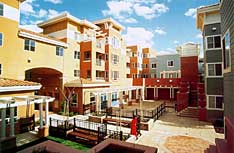
Simple wooden benches, integrated with planters and fencing, provide strategically placed seating along the main circulation path and at either end of the two main courtyards in this Oakland, California project.
(HismenHin-nu Terrace)
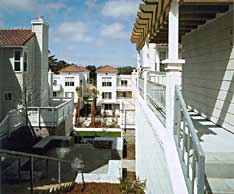
L-shaped concrete benches serve multiple purposes in this San Francisco courtyard - they help define gathering spots along the main circulation path; they act as retaining walls on the uphill edges; and they separate circulation areas from planted areas.
(Parkview Commons)
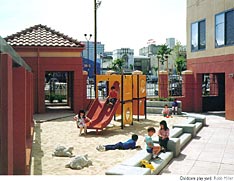
The concrete barrier separating the child's play area from the circulation path also provides sturdy, easy to maintain seating for the children who use the play area and for the adults who supervise them.
(YWCA Villa Nueva)
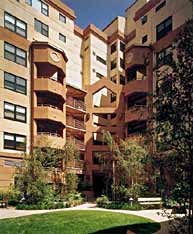
Benches in this San Francisco courtyard are placed so that they are partially surrounded by plants, which provide privacy and shade.
(201 Turk and 111 Jones)
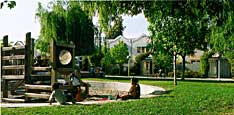
Seating for this children's play area is literally "built into" the landscape of this Los Angeles courtyard.
(Willowbrook Green Apartments)
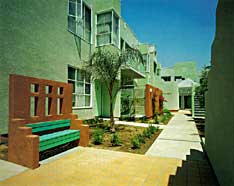
The outdoor seating in this Los Angeles project is clearly integrated with the architecture of the building as a whole.
(Yorkshire Terrace)
